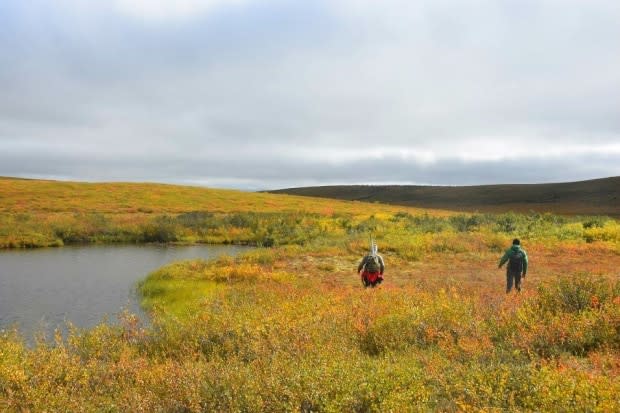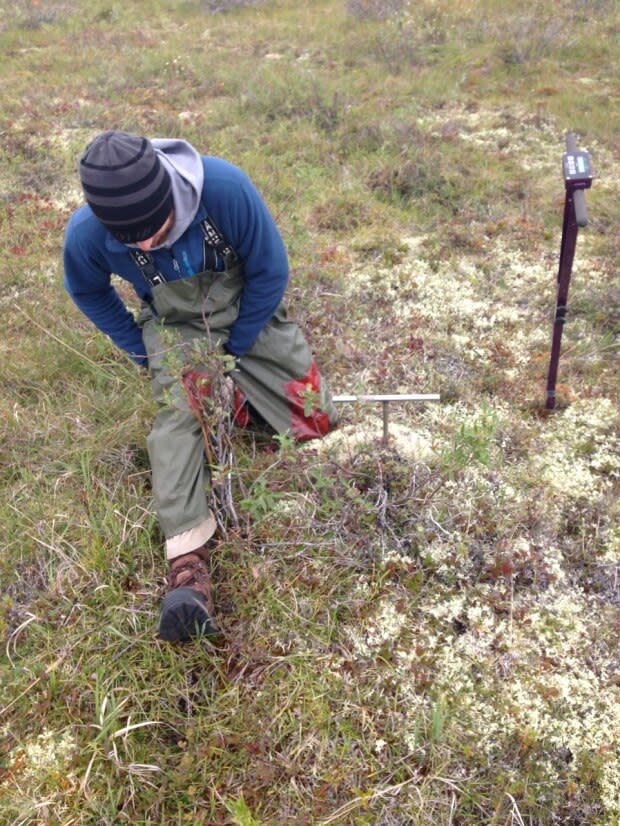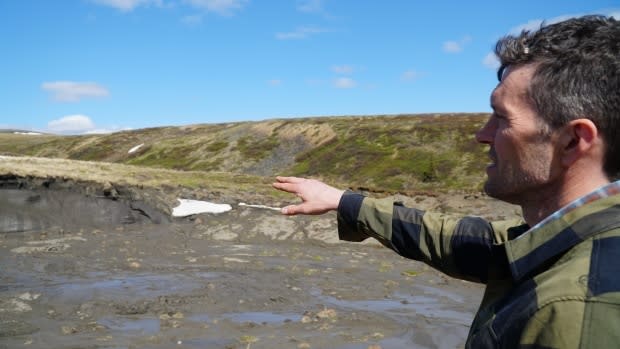Shrubbier Arctic tundra likely accelerates permafrost thawing, study finds
New research finds areas in the Arctic with dwarf birch are experiencing longer periods with no snow, resulting in deeper thawing of the ground, and that may lead to faster thawing of the permafrost.
While their impact varies, a paper recently published in the journal Arctic Science found areas with birch shrubs had longer snow-free periods, in turn accelerating the thawing of the ground below.
"We discovered that the date at which the snow melts is a key driver in how deep the ground will thaw in the summer," said Evan Wilcox, a geography PhD candidate at Wilfrid Laurier University and the paper's lead author.

"Areas where the shrubs protrude through [the snow], the snow melts on average a week earlier," he said. Taller shrubs paired with warmer air temperatures will likely result in more permafrost thawing, he said.
Complicated puzzle
Permafrost is ground made up of ice, organic material and rock that is frozen year-round. The active layer, which sits just above the permafrost, thaws in the summer and freeze again during the winter. When that active layer thickens, it's a sign that permafrost has thawed.
Previous research found shrubs can both warm and cool the ground depending on a number of variables, such as shrub species, terrain and snow depth.
Based out of the university's Trail Valley Creek Research Station, roughly 50 kilometres north of Inuvik, N.W.T., where the boreal forest transitions into tundra, Wilcox set out to better understand this complicated picture.
Using a steel probe, he measured how deep the ground thawed every week over a period of three months in 2015, taking more than 3,000 samples.
Wilcox said while he couldn't tell if the probe was hitting permafrost or the frozen active layer, how deep the probe goes signals how much heat is going into the ground. He also analyzed data on snow depth and snow-free dates gathered by drones.

Areas with dwarf birch saw the snow melt a week sooner, and the ground thaw "significantly" deeper — about 3.5 centimetres.
We've already seen how much earlier the snow melt happens naturally and when that's amplified by the birch shrubs, it can translate into 10 or 20 centimetres of permafrost thaw potentially by the end of the century. - Evan Wilcox, geography PhD candidate at Wilfrid Laurier University
"We've already seen how much earlier the snow melt happens naturally and when that's amplified by the birch shrubs, it can translate into 10 or 20 centimetres of permafrost thaw potentially by the end of the century," said Wilcox.

The paper made no projections on how much carbon emissions could be released.
"It's enough to create some sort of positive feedback loop of global warming," said Wilcox.
Dwarf birch 'taking over,' says local
John Koadloak sees those changes outside the window of his off-the-grid home near the Northwest Territories/Nunavut border on Contwoyto Lake. He's lived there with his wife, year-round, for more than two decades.

"We're seeing more [dwarf] birch growing," said Koadloak. "They are taking over."
"Once the sun hits it, it starts to melt the snow right around it because they are dark," he explained. Koadloak said longer periods with no snow could be good for caribou trying to access food.
But there are still many unknowns.
"The only way is to adapt," he said.
The projected increases in shrubs and possibly more permafrost thawing is also a concern when it comes to infrastructure, said Steve Kokelj, permafrost scientist with the Northwest Territories Geological Survey, who wasn't part of the research but has studied shrubs and permafrost.
Areas disturbed by natural landslides or humans, such as roads, communities and mines, "shrubification" is even faster, he said.
Managing shrub cover along highways and communities is one way to slow down potential warming, said Kokelj.
"[It] provides another layer of understanding of potentially how quickly things are going to change and … helps us understand where those hot spots are going to be," Kokelj said.


